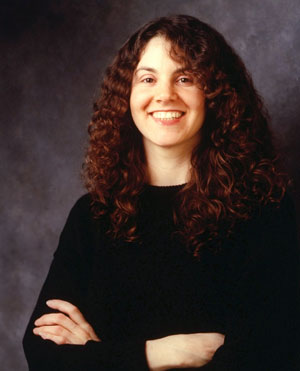 Linda Simensky, Vice President, Childrens Programming, PBS is visiting India as an International Guest of Honor and presenter at the DSK Supinfocom International Indian Buyers Summit powered by AnimationXpress.com.
Linda Simensky, Vice President, Childrens Programming, PBS is visiting India as an International Guest of Honor and presenter at the DSK Supinfocom International Indian Buyers Summit powered by AnimationXpress.com.
Linda will be sharing in-depth insights and perspectives at the Summit during her presentation about PBS, and in the subsequent pitching and networking session. Meanwhile, here‘s excerpts from a quick chat that Linda had withAnimationXpress.com‘s Co-Founder Anand Gurnani
From Private networks to Public broadcasting you have had a very wide range of experience in children’s programming, what’s your take on the similarities and differences between the two?
In many ways, they are more similar than you might think. A series requires many of the same steps in development and production regardless of who is producing the series. The biggest difference for me is how much time is spent working on the curriculum and the educational aspects of the series. That requires a great deal of thought and can add anywhere from a year to two years to the development process. Also, at PBS we approach every property with all the different platforms in mind, and we think about how viewers learn differently using each platform.
And while we do spend a lot of time thinking about how to make sure our viewers enjoy the properties, we also think a great deal about each property’s potential for impact.
It is said that shows that go on to PBS, have a great chance of landing in Walmart and striking big licensing deals… your comments
The industries (both the toy industry and the TV industry) have been in flux and these days, there is no formula that guarantees that a show will automatically get picked up for merchanside or do well in the marketplace. That said, having a show on PBS means that it will be seen across 99% of the United States and that certainly helps retailers as they are considering what properties to take on.
How sacrosanct is editorial from commercial viability when it comes to children’s programming from a public broadcasting service
When we develop shows, we do make sure they are as entertaining as they are educational. And it is possible to do both.
What are the elements and values that you look for in a show at PBS?
We look for great characters, compelling stories and a curriculum that lends itself to storytelling. We like our characters to be aspirational, smart and funny. Our shows tend to embody the “explorer” archetype and try to present viewers with characters who are inquisitive, enthusiastic and open-minded. We rarely feature series where someone is teaching kids. We like to show our characters delving into problems and answering questions themselves. It’s more about the challenge and the fun of finding the answers than about simply acquiring information.
Do you accept independent pitches at PBS? What’s the ratio between Development, Co Productions, Acquisition and Syndication at your channel?
We do accept pitches. Most of the series we work on are projects that we start working on after seeing the initial pitch. We are looking for a very specific kind of show that is entertaining but also features a curriculum. There are not that many shows that can strike this particular balance, so we tend to be very involved with our series from the start so we can take them in a direction that is right for us. Some of these series go on to become co-productions. Rarely are these types of shows acquisitions or syndicated shows.
Do you work with studios from Asia?
Many of our shows have been produced in Asia by partners on series, such as Dinosaur Train, which is produced at Sparky. The majority of our shows are developed in the US, though.
What is your anticipation from the International Indian Buyers and Producers Summit where you are speaking and presenting at in India?
Many of us in the US are just starting to get to know the Indian studios. I am looking forward to meeting people from the different studios and learning more about the Indian animation industry and which studios are known for doing what particular styles. I think it will help to be able to see what all the different studios are doing and perhaps meet some potential partners.
What is your communication to Indian studios and creators wanting to work with you or pitch their shows and ideas?
If producers are curious about making educational programming that is compelling and fun, I am open to taking a look at ideas and giving feedback. We like to see concepts, character designs and story ideas. I am curious to know how similar and how different our sensibilities are.
